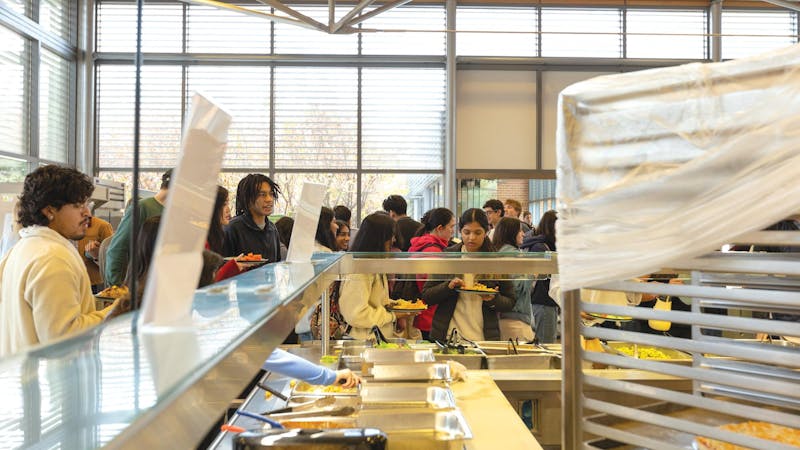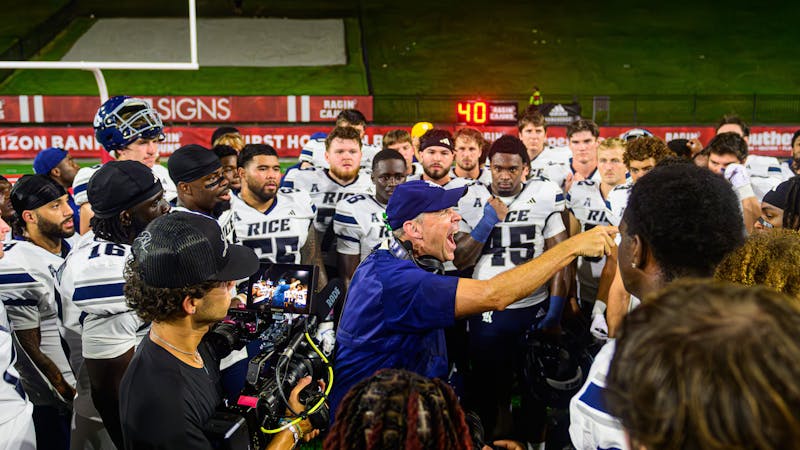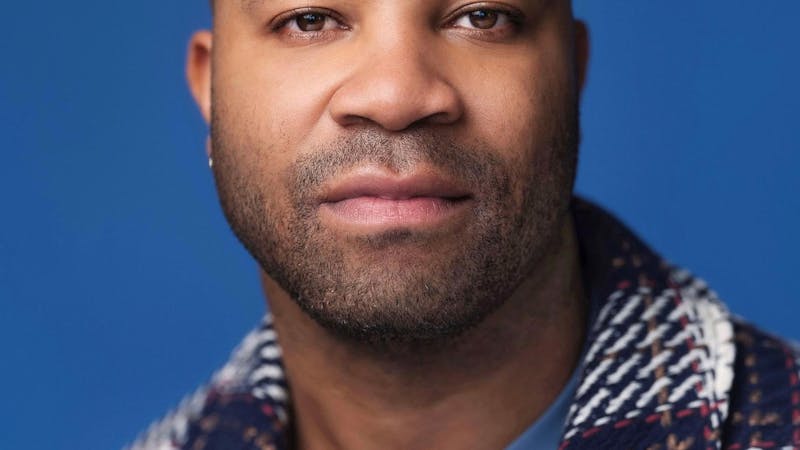MFAH's Newton: bodies or objects
Ranging across names, identities, positions and countries, the Helmut Newton women are utterly, flooringly magnificent. Likewise, the MFAH's latest exhibit White Women • Sleepless Nights • Big Nudes, a 205-photograph oeuvre of the three seminal books that catapulted Helmut Newton to the forefront of fashion and female photography.
Helmut Newton, born Helmut Neustädter in Germany, was forced to flee after his father's business was destroyed in Kristallnacht, one of the biggest pogroms in Nazi territory. Detained by the British, Newton ended up in Australia, where he first began photographing seriously. There, he met and married June Browne, his erstwhile model who later became an acclaimed photographer in her own right under the name Alice Springs. Browne was omnipresent in Newton's work, even occassionally stepping in for him when he fell ill during a shoot. By the early 1960s, the Newtons had settled in Paris, where Helmut Newton became synonymous with high fashion photography, with the glamour of being printed in such publications as French Vogue and capturing personas as Anna Wintour and Karl Lagerfield. (For those not in the know, Anna Wintour was the Vogue fashion editor and dictating voice on mode and style, and Karl Lagerfeld is the creative head behind Chanel.)
The exhibit details the photographs of Newton's first three books, printed large in breathtaking clarity. The pictures are aesthetically beautiful — the details, the light, the shading, the color or lack thereof are reason enough to gasp in awe. Beginning with a striking series of an anonymous woman in Lake Como, Italy, the vivacity and the strength of each woman is daunting. Newton had a gift for portraiture, for posing and for a defined jaw-line and aggressive gaze.
In Big Nudes, Newton contrasted two identical shots: in the first, the woman is clothed, and in the second, she is nude. The difference in power is incredible. His women, interestingly enough, always keep their heels on and their ?nails manicured.
Newton is credited with changing the way culture, fashion and even art perceived the female form. Wintour commented that every woman wants to be a "Newton woman," i.e., strong and empowered. Indeed, many of his photographs convey striking women of incredible strength ?and femininity.
Other works, however, are more complicated. Some of the images from the collection are so haunting, they fill the viewer with an ?unshakable queasiness.
More than the commentary on the masochistic and dangerous relationship women have with beauty via cosmetics, surgeries and starvation inspired by the "Beauty Treatments" series is the image of a woman in a fur cape. Nude, the robe just drapes about her as she stands on a balcony, her hair coiffed with a diamond clip. From the uncertainty in her hands to the jut of her chin, she radiates unease and tension. The look in her eyes is fear coupled with undercurrents of shame. This photograph ultimately defines the exhibit for me and utterly undermines any critic's protestations of Newton's feminism or his "liberation" ?of women.
Images of women wearing saddles, clasping female mannequins or tied up with string further serve to underscore that Newton's women are just that — Newton's. His perspective is limited, flawed, and somewhat degrading. Though his photographs were new and shocking, that should in no way be taken to mean they liberated the female body. I think it is there that the museum curators lose their way. The quotes along the wall try to persuade of Newton's "liberation," his creation of a "new woman." I find this misleading. He was a high-end fashion photographer and needed to constantly push the aesthetic, the socially acceptable fashion envelope in order to stay relevant. Because these photographs were "new'" does not mean they liberated the female form in any way. Because he visually depicted bondage, sado-masochism and lesbianism does not mean he endorsed, understood or accepted these things. His portrayals of them are as marred as they are fictional, stylized renderings using models.
Therefore, the exhibit is a tricky one: beautiful photographs, beautiful women, lingering questions. Why are viewers pushed to accept Newton as some grand liberating feminist? Are these photographs art, or something lower? Did Newton intend any social provocation or was he merely interested in nude women? Am I dismissing him on grounds of gender — a male could never truly understand objectification as a woman does?
The exhibit is worth the mental consternation and the $3 admission fee, so walk the three blocks at some point between now and September 25.
More from The Rice Thresher

Over 1,000 students petition against new meal plan
When Konstantin Savvon opened the Housing and Dining email announcing the new unlimited meal plan, he was instantly concerned about the impact on off-campus students like himself.

Rice football wins season opener under new coach
For the first time since 2018, Rice football opened its season with a victory. Scott Abell was soaked with yellow Powerade following a 14-12 win on the road Saturday against the University of Louisiana at Lafayette, which won 10 games and made it to the Sun Belt Conference championship last season.

Acting like an athlete: Rice basketball alum takes on Broadway
Underneath Chadd Alexander’s Broadway costume, there’s ankle tape and wrist braces — same protective gear he wore as a walk-on basketball player at Rice, though now he’s performing eight shows a week in the ensemble of “Harry Potter and the Cursed Child” instead of running conditioning drills in Tudor Fieldhouse.

Please note All comments are eligible for publication by The Rice Thresher.